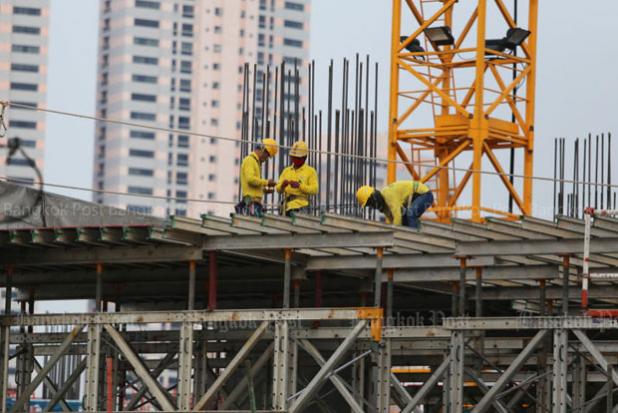Asean office issues rosy outlook for Thai growth
The Asean+3 Macroeconomic Research Office (Amro) is upbeat that the Thai economy will remain on solid footing, and policymakers stand ready to adopt both fiscal and monetary policies to support the economy if needed. Thailand’s growth potential is also sound, said Hoe Ee Khor, chief economist at Amro.
The office forecasts the Thai economy will expand 3.4% this year and 3.5% next because of the low-base effect.
“Thailand’s monetary and fiscal policies are strong enough to accommodate a sustained economic rebound. The country has better fundamentals than its neighbouring countries, including the highest foreign reserves in Asean, low foreign debt and low public debt of 40% of GDP. The public debt of many countries in the region is closer to 60% of GDP,” he said.
However, subdued private investment remains a drag on the Thai economy hindering growth, said Mr Khor.
Thailand’s high household debt, the weak growth ability of small and medium-sized enterprises (SMEs) and rising SME loans are also headwinds, he said.
Higher SME loans are not expected to ruin overall financial stability, but they warrant close monitoring, said Mr Khor.
The Bank of Thailand’s Monetary Policy Committee last month voiced concerns over the debt-servicing ability of SME operators and their competitiveness.
According to central bank data, bad SME loans climbed to 4.48% of loans outstanding at the end of March, up from 4.35% in the fourth quarter of 2016.
Thailand’s headline inflation was forecast to claw back to the low-end band of the central bank’s target next year, allowing the Bank of Thailand room to manoeuvre its monetary policy to accommodate the economy if needed, he said. Enhancing the country’s competitiveness and production efficiency as well as improving education are reform are imperative for Thailand in the long run, said Mr Khor.
“A long-term challenge for Thailand is restructuring the economy to boost its competitive edge. Both private and government sectors have reformed over the past two decades since the 1997 financial crisis, but such efforts have not helped the country to fully reach its growth potential,” he said.
In a related development, Amro forecast the Asean+3 region will grow 5.2% this year and 5.1% in 2018.
China’s soft landing coupled with Japan’s economic growth will be the main drivers for the region to continue to grow, said Mr Khor.
“China will keep growing but at a slower pace. China is expected to expand 6.5% this year and 6.3% next. Its competitiveness and business sector profitability remain in healthy shape, while the decline in foreign reserves to around US$3 trillion from $4 trillion, resulting from capital flight, has already slowed,” he said.
“The economic growth of China and Japan pace the region. If the major countries continue to grow, they will continue to import from other countries in the region.”
Mr Khor also said the wild swing in the US dollar and capital flows would not be severe because of floating currency regimes and lower foreign debt in the region.
Source: http://www.bangkokpost.com/business/news/1267399/asean-office-issues-rosy-outlook-for-thai-growth


 English
English




